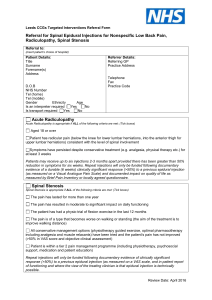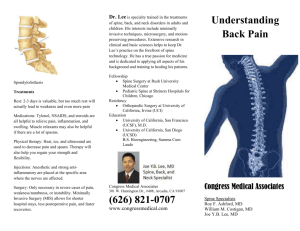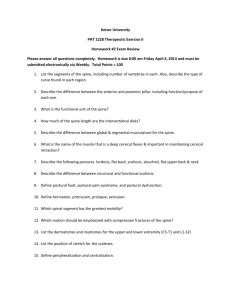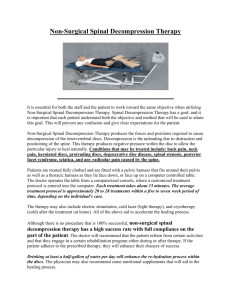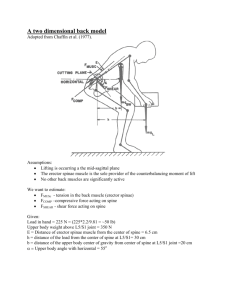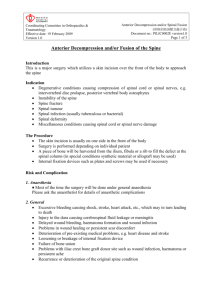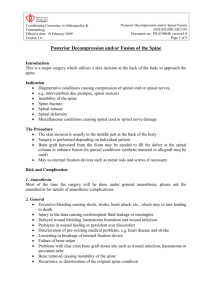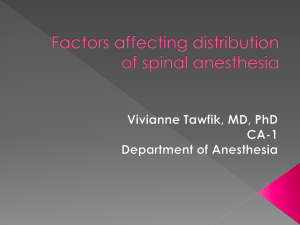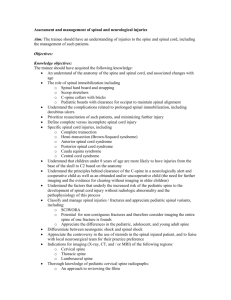Understanding Spine Pain and Treatment
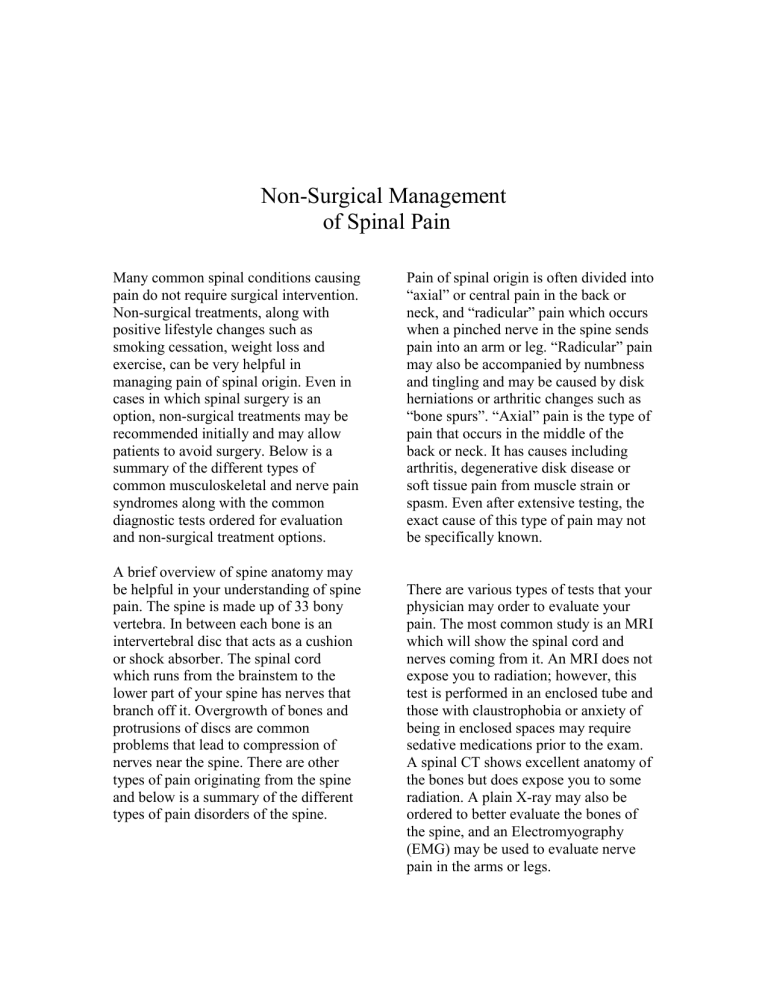
Non-Surgical Management
of Spinal Pain
Many common spinal conditions causing pain do not require surgical intervention.
Non-surgical treatments, along with positive lifestyle changes such as
Pain of spinal origin is often divided into
“axial” or central pain in the back or neck, and “radicular” pain which occurs smoking cessation, weight loss and exercise, can be very helpful in managing pain of spinal origin. Even in when a pinched nerve in the spine sends pain into an arm or leg. “Radicular” pain may also be accompanied by numbness and tingling and may be caused by disk cases in which spinal surgery is an option, non-surgical treatments may be recommended initially and may allow patients to avoid surgery. Below is a summary of the different types of common musculoskeletal and nerve pain syndromes along with the common diagnostic tests ordered for evaluation and non-surgical treatment options.
A brief overview of spine anatomy may be helpful in your understanding of spine pain. The spine is made up of 33 bony vertebra. In between each bone is an intervertebral disc that acts as a cushion or shock absorber. The spinal cord which runs from the brainstem to the lower part of your spine has nerves that branch off it. Overgrowth of bones and protrusions of discs are common problems that lead to compression of nerves near the spine. There are other types of pain originating from the spine and below is a summary of the different types of pain disorders of the spine. herniations or arthritic changes such as
“bone spurs”. “Axial” pain is the type of pain that occurs in the middle of the back or neck. It has causes including arthritis, degenerative disk disease or soft tissue pain from muscle strain or spasm. Even after extensive testing, the exact cause of this type of pain may not be specifically known.
There are various types of tests that your physician may order to evaluate your pain. The most common study is an MRI which will show the spinal cord and nerves coming from it. An MRI does not expose you to radiation; however, this test is performed in an enclosed tube and those with claustrophobia or anxiety of being in enclosed spaces may require sedative medications prior to the exam.
A spinal CT shows excellent anatomy of the bones but does expose you to some radiation. A plain X-ray may also be ordered to better evaluate the bones of the spine, and an Electromyography
(EMG) may be used to evaluate nerve pain in the arms or legs.
In terms of managing your pain, a good starting point would be a physical therapy evaluation. Patients will work one-on-one with a therapist who will design a regime that is appropriate for their specific problem. Cervical collars or lumbar supports may be helpful.
Many patients do find relief with alternative treatments such as massage, acupuncture or chiropractic care.
In addition to physical therapy, there are a variety of medicines that may be used for spinal pain. The following are commonly used medications to treat mild to moderate pain conditions…
Non-narcotic medications: These medications are often excellent for pain and have no significant risk of dependency. Possible severe side effects that need to be monitored while taking these long-term medicines include liver damage from acetaminophen stomach bleeding, kidney problems or increased cardiac risks from anti-inflammatories.
acetaminophen (Tylenol)
non-steroidal antiinflammatories (NSAIDs) o ibuprofen (Motrin) o naproxen (Aleve)
Narcotic pain medications, or opiates, are used to treat severe pain.
Possible side effects include physical dependency or tolerance, addiction, drowsiness, and constipation.
Because of the risk of addiction, the federal government closely monitors these medications. Common narcotic medications include…
hydrocodone/acetaminop hen (Vicodin)
oxycodone/acetaminophe n (Percocet)
For various types of nerve pain such as numbness and tingling there are certain medications that may be tried. A common side effect is drowsiness and these medications may take weeks to have a beneficial effect. o gabapentin (Neurontin) o pregabalin (Lyrica)
Last, there are various types of injections into and around the spine that may help with pain and inflammation. The most common type of injection is an epidural injection. This injection is usually performed by a doctor who specializes in pain management. Before your injection, you will meet with the doctor who will be performing your injection. At that initial meeting, he or she will examine you and evaluate your need for the proposed injection and the risks and benefits of the procedure will be discussed in detail prior to your injection. This type of injection is performed with the use of x-ray for guidance and is usually performed in an office-based setting.
Lifestyle factors have a tremendous impact on spinal pain. Smoking worsens disk degeneration and has been associated with higher rates of back pain in many studies. Obesity and lack of exercise play a major role in spinal pain.
An integrated approach that combines many non-surgical options often gives the best results.
